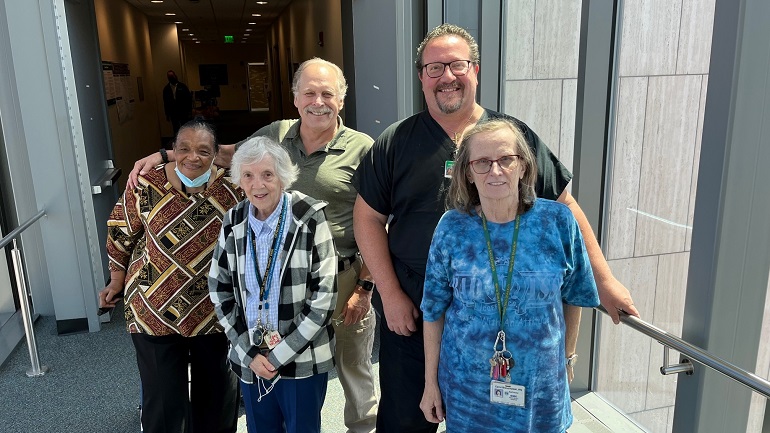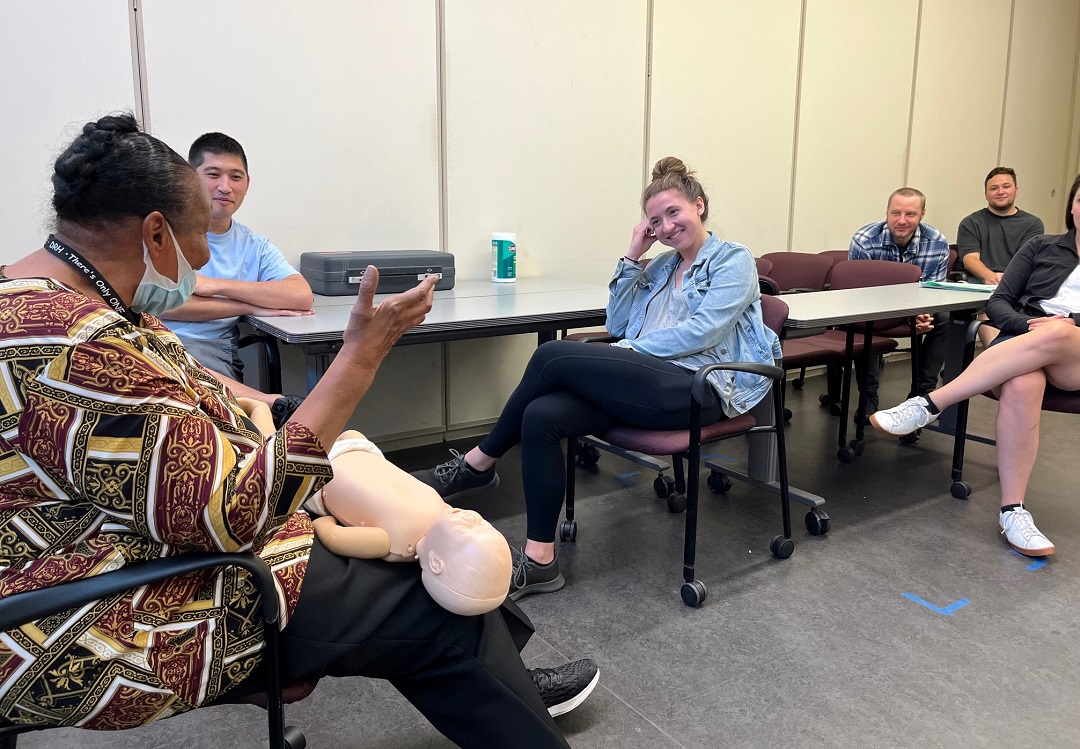
The names and faces of the 300 new medical students who enter the Wayne State University School of Medicine may change every year, but the steadfast dedication of the crew responsible for two modules – Basic Life Support Training and Advanced Cardiovascular Life Support Training – has remained nearly the same for more than 35 years.
The crew is led by Emergency Medicine physicians Ross Tabbey, M.D., Res. ’85, and Philip Lewalski, M.D. ’89, Res. ’92, who are the lead instructors for the first aid instruction provided to WSU matriculants.
“Every medical student from the 1980s and on have gone through us,” Dr. Tabbey said.
Both started teaching the classes shortly after completing their Emergency Medicine residencies in Detroit Medical Center programs. It didn’t take long for either doctor to fall in love with instructing medical students, residents, attending physicians, nurses, emergency medical technicians and other health care professionals in the life-saving techniques to be used in and out of clinical settings.
Basic Life Support, required for all medical students, teaches cardiopulmonary resuscitation for adults, children and infants, the importance of early automated external defibrillator use, ventilation techniques and relief from choking.
“They’ve taught generations of medical students,” said Department of Emergency Medicine Edward S. Thomas Endowed Professor and Chair Brian O’Neil, M.D. ’86. “Ross will sit with you until you get it. Once you see it and learn it, you’ll never forget it. When the light goes off, it’s a great feeling.”
That ‘it’ is how to spot Dysrhythmia – a blip on an EKG indicating an abnormal or irregular heartbeat. It’s also the ability to remain calm in a crisis, remember the techniques taught in the course, and what Dr. Lewalski calls “the light at the end of the tunnel,” when things learned in class can be applied to real life, from the ER to the public park, a mall, restaurant or elsewhere. The best emergency room physicians need a strong work ethic and a lot of common sense, he added.
“This is a real skill you need to learn. There’s not a lot in this world you can do with just your hands. You can save a life,” said Dr. Lewalski, an assistant professor of Emergency Medicine. “We’re trying to teach you to use your clinical judgment. You have to learn to trust that.”
This week Dr. Lewalski, the School of Medicine’s Basic Life Support training coordinator, will teach BLS to the more than 300 students who make up the Warrior M.D. Class of 2026. The module is part of the class’s orientation.

They are backed by a trio of nurses – Marylin Blair, R.N.; Carol Brzuchalski, R.N.; and Nancy Gibbs, R.N., – who have provided instruction at the School of Medicine 10 to 12 times a year for the last three decades or more. Shazzandre Doze is the group’s program coordinator, reporting required data to the American Heart Association regularly. The same team teaches attending physicians, emergency medical technicians and other health care professionals in need of a first certification, or a refresher course.
The advanced course covers basic life support skills, including effective chest compressions, use of a bag-mask device, and use of an AED, recognition and early management of respiratory and cardiac arrest; recognition and early management of peri-arrest conditions such as symptomatic bradycardia; airway management; related pharmacology; management of ACS and stroke; and effective communication as a member and leader of a resuscitation team.
“I’ve had a lot of people come back,” said Blair, who worked at Henry Ford Hospital in Wyandotte before retiring. “This is so much fun to teach. For me, this is the balance I needed to keep going.”
Dr. Tabbey will hang up his scrubs next month, but will continue teaching.
“It’s probably the reason I could hang in there so long, in the ER,” Dr. Tabbey said. “We’re blessed with students who are really eager to learn.”